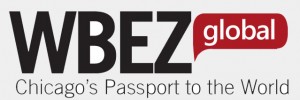Everyday people can do things to keep expecting mommies and their babies alive.
By Ashlei Williams
It doesn’t take a red cape, a catchy theme song or the ability to fly to rescue someone. Action is the essence of heroism.
Each year childbirth kills about 529,000 women around the world and leaves 10 million with injuries, infections and diseases such as pelvic inflammation. You can help save women and infants, too, by following these five steps.
Engage the community
Research the data at the World Health Organization, the United Nations and the Centers for Disease Control and Prevention websites. The WHO’s Global Health Observatory reports provide hyperlinks that you can copy and paste onto your Facebook wall. Twitter is also a place to post info-bites such as, “Two million kids died from preventable diseases in 2008. Retweet to change that this year.”
“One of the challenges is to … put faces and names and images to those numbers,” says Dr. Aana Marie Vigen, associate professor of Christian social ethics at Loyola University Chicago.
Donate to a cause
Patricia Mertz, 65, founded Ivory Coast Mothers and Children in 2008 after serving in the Peace Corps for two years. This Chicago organization is headquartered near Ukrainian Village but provides health care to pregnant West Africans, where Mertz and volunteers are building a women’s center. Through fundraising events such as a silent auction at Oktoberfest 2011, they reached their goal of $200,000. The center opens summer 2012.
Support nearby places such as Northwestern Children’s Memorial Hospital and Resurrection Healthcare. Mertz found success in requesting $30 from donors as well as supplies for the clinic, such as cotton balls and syringes.
“It’s just amazing when you say something, and then all of a sudden the wheels start turning and people will help you out,” Mertz says.
Translate for others
About 20 percent of Americans 5 and older speak a language other than English, according to the U.S. Census Bureau’s 2006-2010 American Community Survey. But how often do people apply that skill? Translators are needed at clinics in diverse neighborhoods. Often patients are skeptical of health services because the doctor can’t communicate with them.
“Speaking the language and understanding the culture and not just judging people or talking down to them or whatever in the name of public education, but showing the respect and empathy and the understanding — that really builds trust and rapport,” Vigen says.
Venture into health care
Illinois’ largest free clinic, Community Health, in West Town and Englewood, has 1,000 volunteers, half of which are medical professionals.
“It’s not even that we need physicians in a lot of these contexts, but [we need] skilled nurse midwives and health community workers who can help guide women through prenatal care and prepare for childbirth,” Vigen says.
Volunteers usually receive training in sessions on tasks such as taking vital signs. You can also help out by answering phones and greeting patients.
Change the environment
Environmental issues abroad and in your communities, such as Chicago’s South Side, are also a concern. Air pollution can cause infant asthma, and contaminated water can lead to infection and disease. At the Watershed Action Volunteer Efforts program for Cook County residents, you can learn about implementing eco-friendly practices, such as removing garbage along a waterway.
Heroism isn’t a far-removed act of greatness. It’s discovering a will and a way to make the effort.
“I knew that I had good people that I was working with and love, and I felt like I had an unusual opportunity to really make a difference in their life, quite simply,” Mertz says.
